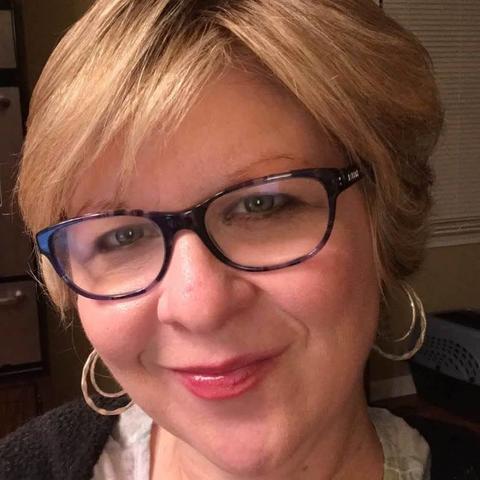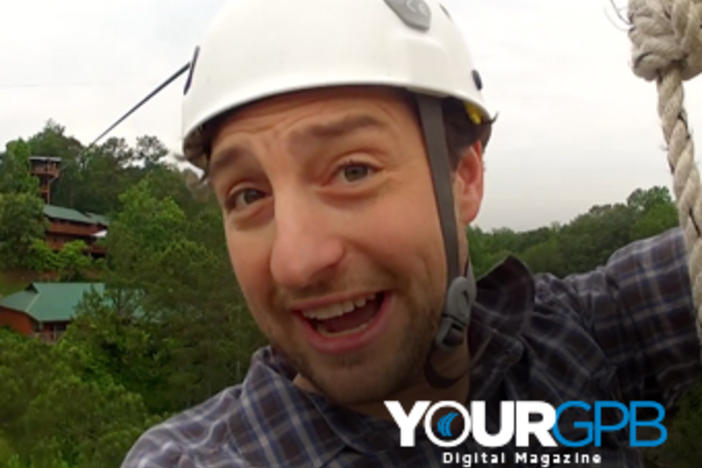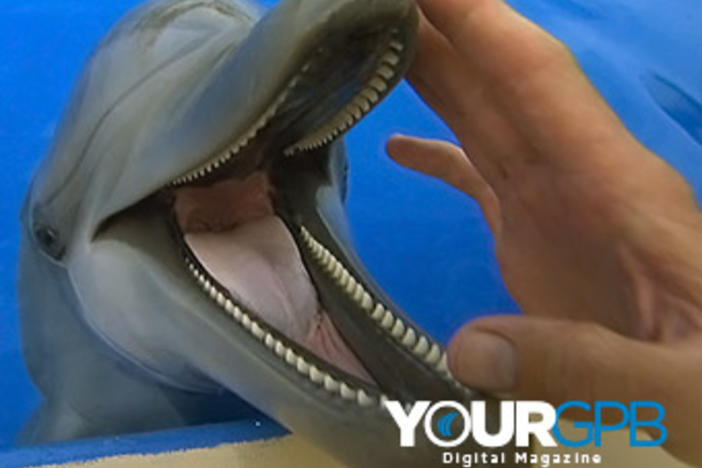
Section Branding
Header Content
Surviving In The Wild With Georgia Outdoors
Primary Content

The following Article is from Your GPB Digital Magazine. Click here to download the iPad App.
Wildlife photographer Shane Keating boats several miles out in to the ocean to Little Egg Island during the early morning darkness. Approximately sixty miles south of Savannah, Georgia, Little Egg Island has become a safe haven for hundreds of pelicans. From the beach, Keating crawls into the marsh mud, lugging his heavy camera gear in the dark in hopes of getting close to their nests without disturbing them too much. Throughout the years, pelicans have become one of his favorite species to shoot, and he knows if he moves slowly and quietly, he’ll be able to get close.
“It just takes time and sensitivity,” Keating says as he recalls this scene from his time on Little Egg Island shooting for the Georgia Outdoors episode “Pelican Survivors.” “I’m very passionate about doing the best possible work I can do for GPB, and I feel very strongly about the idea of using television as a tool to help protect ecosystems, wild places, plants, and animals.”
Keating’s mindfulness of his camera subjects makes him an integral part of the Georgia Outdoors production team, along with executive producer/writer/host Sharon Collins and editor Adam C. Simon. The Emmy-winning GPB Original production gives viewers an amazing view of Georgia’s natural environment and the work of the people who seek to preserve it and achieve a greater understanding of all of its wonders. Now in its twentieth season, Georgia Outdoors has covered subjects from the state’s Centennial Farms program to the Altamaha River. The series also provides a closer look at Georgia’s wildlife population, including episodes on loggerhead turtles, frogs, snakes and bats.
To understand how the pelicans on Little Egg Island became a part of the Season 20 episode “Pelican Survivors,” it’s important to look back three years to the episode “Dark Waters Ahead,” which premiered in June 2010 in the wake of the Deepwater Horizon oil spill in the Gulf of Mexico. It is now considered the largest accidental marine oil spill in the history of the petroleum industry. Following the explosion of the Deepwater Horizon oil rig, a sea-floor oil gusher flowed continuously for three months. At the time, Collins made the decision to film a special episode that examined the ecological impact on the Gulf Coast and Georgia, including the dangers to the rich wildlife population and the effects on the fishing industry. “We decided to do ‘Dark Waters Ahead’ because increasingly, I’m trying to make Georgia Outdoors a show that is regional,” Collins says. “I looked at the oil spill in the Gulf as something that could directly impact us. Much of the big sport fish that we catch off the shores of Georgia begin in the Gulf, and then they are carried by the Gulf Stream around over to the Atlantic Coast. So I thought if all the little fish larvae are impacted severely, we may not know for ten years. Even if we don’t, if a big pocket of oil gets picked up by the Gulf Stream and ends up over here, we’re going to have oil on Georgia’s coast. Luckily it never did that we know of, but to me, that was a relevant story for Georgia Outdoors to do. Those are our neighbors, and you cannot ignore the people who live next to you whether you want to or not.” Later on, after “Dark Waters Ahead” had aired, Collins also could not ignore something she saw in the video footage that Keating had been shooting for another episode called “On the Altamaha.”
“The saddest thing, the face of the oil spill, was the brown pelicans covered in oil,” Collins states. “When I was looking through the video, I saw this red flapping band on a bird. Biologists band birds all of the time, but they are usually little metal things. I called Tim Keyes, one of DNR’s top biologists who deals with bird populations, and I told him I had video of this bird. He said that it had to be a Gulf bird, a Louisiana bird.”
Collins learned that about 150 pelicans had been cleaned and released off of the Georgia coast to get them away from the oil spill. “The idea was to release them over here until the oil had dissipated, and then they would come back to Louisiana because it is their home,” she says. “This is what their instinct will tell them to do. Well, at least a dozen of them decided they liked it here, and they came back and nested.”
The pelicans were nesting, but Collins says their ability to reproduce was in doubt. “That was really a huge story to me because I had been told by at least a half dozen biologists that once a bird is oiled, hang it up,” she says. “The thought was that they are lucky if they live a long life, but they sure can’t reproduce because of the stress and the trauma, or the ingested oil perhaps. They didn’t know.”
Although she had been told that it was highly unlikely that they could reproduce, Collins sent Keating back to Little Egg Island where the banded pelicans had been spotted so that he could monitor and film them. “First, we noticed that they were sitting on something,” she recalls. “Then it became abundantly clear that the oiled birds were sitting on chicks. It became a challenge, and we were determined the birds would have chicks. And they did.” Keating shot footage of pelicans on Little Egg Island over the course of about two years that Collins would use to craft the story of the birds’ resilience from the oil spill. He says it was an emotional experience at times. “I did cry in my viewfinder sometimes while filming them,” he admits. “Baby pelicans are just so adorable. People call them ugly or strange looking or whatever, but I don’t see them that way at all. To me they’re just so beautiful, especially when they’re babies. I love their faces and their big eyes and the long bills, their necks and those fantastic pouches.”
Keating filmed as much of the pelicans’ natural life cycle as he could capture. “I wanted to show how two birds court each other, how they build nests together, copulate, incubate eggs, then feed and care for their hatchlings,” he says. “It’s like these birds just opened their secret little world to me and let me in with my camera. The adults allowed me in at one if their most sensitive times, during reproduction. They didn’t have to let me in. They could have just flown away.”
Keating explains that pelicans do all of this in big groups, so he shot different pairs during various stages in the nesting cycle. With each of his visits to Little Egg Island, he captured the growth of the babies. “Each and every little bird is an individual,” he says. “They all have their own peculiar strengths and preferences. If you look at them, they all look different from each other. They have different color patterns, body shapes, expressions and different eyes looking back at you. They’re characters. I feel like they have a sense of humor, and I wanted to show some of their unique personalities through my images.”
With all of the time that Collins and Keating spend together on the road and on location shooting, it’s a good thing that their personalities click. “We both want the show to be as good as possible and do justice to our subjects,” Keating says. “I love working with Sharon. She’s the best producer I’ve ever worked with, hands down. She knows photography and what’s special and important. She’s very patient, and she gives me the time I need to get our images. She spends hours and hours looking at my footage and making careful notes.”
“I respect his passion for being behind the camera and capturing wildlife like nobody else can,” Collins says of Keating. “He’s right there with me, and we work very closely. If there’s one thing I’ve had to learn being a type A personality, it’s patience. I can’t say ‘Go out and get those birds. You’ve got 30 minutes.’ He might sit out there for 30 hours and not get what we need, but this is a guy who lives to shoot video.”
Sometimes issues like the weather don’t allow them to capture their subject matter in the way they prefer. “For the pelican show, I really wanted to film the nesting birds during some crazy thunderstorms and pounding rain,” Keating reflects. “I wanted to film the adults protecting their young from the wind and rain, but Sharon was like, ‘No Shane. You can’t do that. It’s not safe.’ She was probably right, but I pouted anyway.”
“I have to keep him from himself,” Collins says with a laugh. “He only complains if we’re not doing something.”
In addition to the support Collins and Keating provide to each other in the field, they say Georgia Outdoors wouldn’t be possible without the assistance of wildlife biologists and researchers, such as Tim Keyes, who first got the call from Collins about the banded pelicans and often accompanied her and Keating to Little Egg Island.
“We work very closely with DNR and biologists from all over the place,” Collins says. “The Louisiana Department of Wildlife and Fisheries helped us with ‘Pelican Survivors.’ The Department of Natural Resources in Georgia has some of the best biologists in the nation as far as I’m concerned. When I was with a national organization, I had the opportunity to work with biologists in other parts of the nation, so I’m not just saying that.”
“I have a lot of support to get these images,” Keating adds. “Wildlife biologists and researchers take me to the interesting places where neat stuff is happening. They point at things for me so I can see them, then they say, ‘There!,’ and I do the rest. So without skilled, qualified, sensitive help, I’d have nothing. It’s a team effort.”
“This is a pretty tight-knit community,” Collins concludes. “People who believe that conservation is necessary and that nature is something to be respected and looked at often with awe want these stories to be told. They want the resources of this state to be seen and appreciated as much as they appreciate them.”
Secondary Content
Bottom Content





